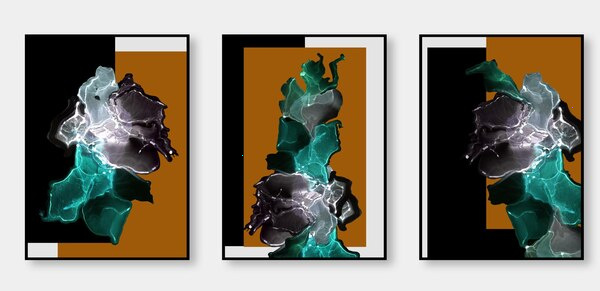The Evolution of Visual Narratives
Visual narratives, a critical component of human communication, have evolved significantly over the centuries. From ancient cave paintings to modern virtual reality, they offer a dynamic and immersive way to convey stories, emotions, and information.

In the earliest days, our ancestors used simple visuals to document their experiences and communicate with others. These primitive images laid the foundation for the development of more complex storytelling methods. The symbols and drawings found in caves were not merely artistic expressions but served as crucial means of survival—transmitting knowledge about hunting methods, sacred rituals, and community traditions.
As civilizations progressed, so did the complexity of visual narratives. Ancient Egyptians constructed elaborate hieroglyphs, blending artistry with linguistic function. These visuals were instrumental in preserving histories, religious beliefs, and daily life in a society where not everyone could read written scripts. Similarly, ancient Greece and Rome used sculpture and frescoes to depict myths and historical events, blending visual aesthetics with storytelling—a tradition that would deeply influence the visual arts for centuries to come.
The Middle Ages saw the rise of illuminated manuscripts and stained glass windows, especially within the context of Christianity. These visuals served as educational tools for an illiterate public, transforming compelling narratives from scripture into vibrant, powerful images that could captivate and educate simultaneously.
With the invention of the printing press in the 15th century, the visual landscape changed dramatically. Images began to accompany text, offering readers enhanced comprehension and engagement. The subsequent rise of printmaking allowed for the replication of artworks, making storytelling through visuals accessible to a broader audience.
The 19th and 20th centuries witnessed technological innovations that transformed visual narratives further. Photography emerged as a groundbreaking medium, offering a new way to capture and relate reality with unprecedented accuracy and immediacy. Film followed, merging storytelling with motion, sound, and eventually color, which added new dimensions to visual narratives. Cinema became a dominant cultural force, providing viewers with rich, immersive experiences that could evoke deep emotional responses.
In the realm of two-dimensional art, movements such as Surrealism and Abstract Expressionism in the 20th century challenged traditional narrative structures, prompting audiences to derive personal interpretations rather than follow linear storyline presentations. Comics and graphic novels also rose to prominence, offering unique blends of text and imagery, creating hybrid forms of storytelling that appealed to diverse audiences.
Entering the digital age, interactive mediums revolutionized visual narratives once more. Video games introduced a new level of engagement, allowing players to not only witness a story unfold but actively participate in shaping its direction. The internet provided a platform where multimedia narratives could blossom, combining text, images, video, and audio in seamless, interactive experiences.
Today, advancements in technology like virtual and augmented reality promise to transform visual storytelling further. These technologies create immersive environments that can fully engage the senses, placing viewers at the heart of narratives in ways previously unimaginable. This new frontier challenges traditional notions of storytelling, offering unprecedented opportunities for creators and audiences alike to explore narratives on a deeply personal level.
As we look to the future, the evolution of visual narratives is certain to continue. Bound by neither medium nor technology, they will remain an essential element of human culture, constantly adapting to reflect and shape our understanding of the world. The journey from ancient cave walls to virtual landscapes exemplifies the human desire to convey stories and ideas through ever-evolving visual means—a narrative that will undoubtedly carry forward into new and exciting forms.